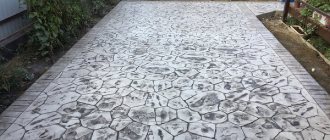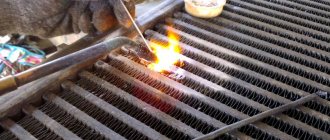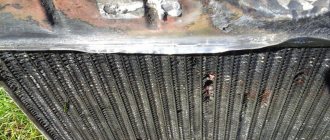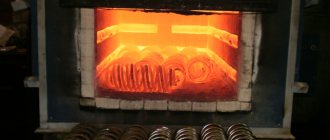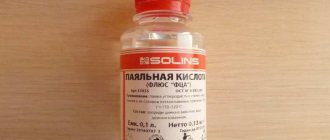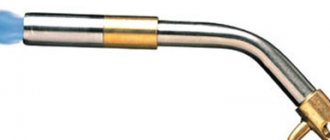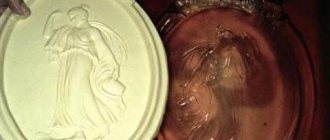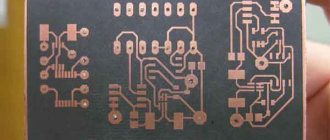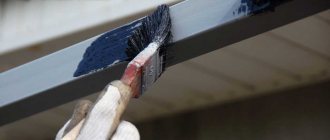No good soldering is complete without the use of flux. This product helps reduce the effect of high temperatures on the metal, reducing surface tension during melting, and also allowing the solder to flow evenly. Additionally, this composition saves the metal from oxidation and also removes already formed oxides. And you can not only buy a suitable one, but also make it yourself. This material will tell you how to make flux.
Varieties
Before making soldering flux with your own hands, you need to determine which ones are needed. For example, low-temperature ones, which begin to melt when heated to 450 °C. And there are high-temperature ones that melt only when heated above 450 °C.
They are also divided by composition:
- Neutral ones are suitable for low-melting solders and copper. These include waxes, stearin, rosin.
- Low-corrosive soldering products are made from rosin, fats, water, alcohols, and weak acids. Rosin helps the active components not cause rapid corrosion of metals.
- Highly corrosive mixtures contain highly active components, sometimes even aggressive ones, for example, fluorides, chlorides, acids, etc. These are usually sold in the form of gels or pastes, since it is important to apply them and use them carefully, because the quality of the solder can be ruined.
Also, soldering products can be divided into groups according to their state of aggregation:
- Solid ones, for example, rosin.
- Liquids such as soldering acid.
- Pastes and gels that have combined compositions.
Not for every type you can make the product yourself at home, but there are recipes for the most common ones. We will consider them further.
Features of soldering with flux
When connecting copper pipes using flux, soldering can be done at temperatures up to 450⁰. During low-temperature soldering, the base metal is not deformed, the seam is smooth and uniform, since the flux wets the surface well and penetrates the capillaries. Thanks to it, the solder is distributed evenly, and there are no pores or slag inclusions in the seam.
During the soldering process of high-temperature joints, the flux spreads over the seam and closes it from contact with air, preventing oxidation.
The flux should be selected according to the solder. It should melt before the solder itself and provide a good connection at the capillary level.
Flux made from citric acid or aspirin
It’s easy to make a flux with your own hands from citric acid or aspirin, because they are quite good antioxidants. This is the simplest soldering composition that you can make yourself.
You just need to take an aspirin tablet or citric acid, dissolve it in water until it completely disappears (no sediment should remain either).
Important!
When soldering, a lot of gas will be released here, so the room should be very well ventilated.
It is recommended not to use lemon juice instead of acid, as it will have almost no effect.
TechnoStation
For good soldering of BGA chips, you need a high-quality flux - the quality or the possibility of soldering in general depends on it.
When first getting acquainted with chip soldering or reballing, most are in no hurry to buy real original fluxes from popular manufacturers, and consider it sufficient to first try a Chinese analogue. I will say unequivocally: soldering with cheap Chinese flux and original ones are two completely different things. I was convinced of this during the first attempt to roll balls through a stencil onto a chip from a video card. I used the most popular Chinese flux RMA-223. Its price in the aliexpress store is the most attractive. Nothing worked for me: several balls constantly did not want to lie on the contact pads, so I had to repeat the procedure several times. Moreover, if at the first attempt of melting the balls they did not stick to the platform, then after any amount of heating it is useless.
This led me to search for a quick solution. To begin with, I tried to repeat the procedure with alcohol rosin. It didn’t work out, because the rosin burned, and the balls simply didn’t have time to melt. But I noticed that those that melted instantly fell on the platforms.
The main feature of fluxes for BGA soldering is the ability to retain their properties for a long time at high temperatures and the absence of boiling. As for Chinese flux, it does not darken or burn out at high temperatures, but its flux properties leave much to be desired.
Therefore, the idea came to modify the Chinese flux RMA-223 by adding rosin to it (in my case, alcohol rosin), but for this it is necessary to get rid of alcohol, which will lead to the boiling of the flux at high temperatures. This recipe helped me a lot, I still use it to this day and not only for BGA soldering. Since it has a thick structure, the flux is convenient to apply when soldering SMD elements and other parts. It is not necessary to wash it off after soldering.
So, you will need:
1. Chinese flux RMA-223
2. Alcohol rosin LTI-120 (can be replaced with other alcohol rosin)
3. Metal container for heating (I took an aluminum flask from under photographic film)
4. Mixing spatula (in my case, a pencil)
Procedure:
1. Squeeze RMA-223 flux into the container.
2. Heat the flux until it becomes liquid.
3. Add alcohol rosin LTI-120, in a ratio of approximately 1:3 (that is, LTI-120 - 25%, RMA-223 - 75%).
Heat the resulting liquid, stirring with a spatula until it boils gently. To warm up, I used a heat gun.
4. Continue heating until boiling stops or becomes very weak. This will indicate that the alcohol has evaporated from the liquid.
5. While the resulting flux is hot and liquid, draw it into syringes.
All! The flux is ready, after cooling, it will become as thick as initially and acquire the properties of a good flux. In comparison with the original fluxes, I personally didn’t notice any difference. It also provides high-quality soldering and is easily washed off without leaving stains or burns.
I hope you find this recipe useful.
Alcohol rosin flux
You can also make a homemade flux for soldering from rosin and ethyl alcohol. Here, rosin is first crushed to the finest state, and then dissolved in ethyl alcohol.
The finer you can crush the rosin, the faster it will dissolve. But the mixture will still need to sit for a few hours to fully combine. Although this process can be accelerated if the future flux is heated to 80° in a water bath in glass. Such dishes can then be washed as usual.
Blitz tips
- If it is not possible to prepare everything you need , you can take rosin as a flux and remove the oxide film from the surface of the aluminum under the molten rosin. In this case, the soldering iron will be used not only for its intended purpose, but also as a tool capable of removing the oxide layer.
- without the use of special materials , especially since the quality of such products will not be very high, and therefore it is best to use specialized tools for soldering this metal.
Glycerin flux
In the same way as alcohol rosin was made, you can make glycerin flux with your own hands. Here, instead of ethyl alcohol, glycerin will be used, which is added in the same proportions. The rosin here will take longer to dissolve, but the do-it-yourself soldering composition itself will be thicker than alcohol rosin, and therefore easier to work with.
You can even first dissolve rosin in alcohol, and then mix this composition with glycerin, so the quality of the composition will only increase. But this DIY soldering compound will have to be washed after use.
Rosin can also be made with your own hands - from the resin of coniferous trees, melting them down.
What to use?
The choice of flux for aluminum depends on a number of important factors. In particular, the most popular is the so-called binary flux, which is a solution of concentrated phosphoric acid.
It has a large number of positive aspects:
- This composition is no-clean , that is, it will not require additional washing after completion of soldering work.
- It acts very quickly , so you can start soldering almost immediately after applying it to the surface of the wire.
- The substance is universal , therefore it is suitable for a number of other metals, in particular steel or copper.
To make aluminum soldering as good as possible, you need to use solders that contain aluminum, silver, silicon, zinc and copper. You can find consumables on sale that contain all these materials.
When choosing solder, take into account that the connection will have the highest ability to resist corrosion processes if the solder contains a large amount of zinc.
It is quite acceptable to use solders made on the basis of lead and tin for soldering aluminum , but here it will be impossible to do without either mechanical stripping of the material or without the use of reliable fluxes. It is not recommended to use this type of solder as aluminum will not bond to it reliably. Another negative point is the susceptibility of the connection to corrosion.
To solder aluminum, you should purchase only high-temperature solders, without which it will be quite problematic to achieve a high-quality connection of wires.
In addition to solder and flux, you will need a soldering iron. The width of the tip here will directly depend on how large the cross-section of the wire is - the higher it is, the wider the tip should be selected. It is worth noting that soldering irons with unregulated heating temperatures are now gradually becoming a thing of the past.
They are being replaced by so-called soldering stations. These products are good because they have a temperature regulator for heating the soldering iron tip, as well as a whole set of these replacement tips. When working with a material such as aluminum, this is a very useful point. On the display you can set the required temperature to the nearest degree and get to work.
Based on hydrochloric or phosphoric acid
To make soldering flux with your own hands with hydrochloric acid, you need to proceed as follows:
- Concentrated hydrochloric acid is diluted with water - 1:1.
- Pour the mixture into zinc granules (necessarily in glass).
- Wait for the zinc to dissolve. 1 liter of mixture will require 412 g of zinc, from this you can make your own calculations.
Important!
Since zinc will dissolve with a large release of hydrogen, the room should be very well ventilated, and there should be no fire nearby.
Steel is soldered with this flux, but if you add ammonia to the solution (in the same amount as zinc), then this soldering agent is suitable for many other alloys and metals.
This will be a liquid flux, so it is better to store it in glass and apply it to the soldering area with a brush. The container must be tightly closed so that the homemade product does not spoil.
